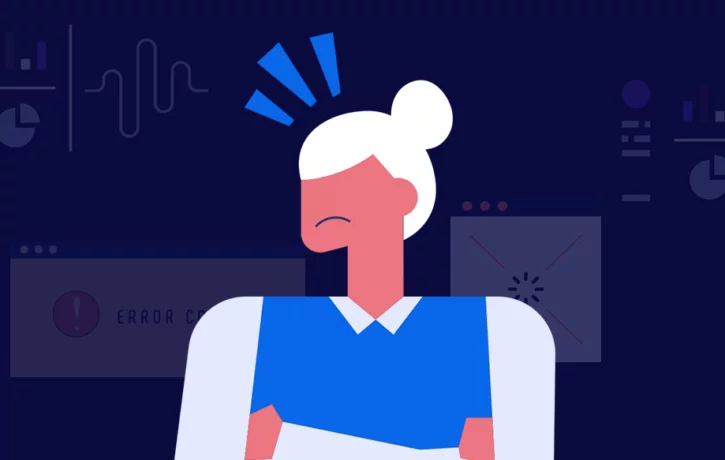Providing bad employee onboarding is like throwing a kid into a pool for the first time and saying, “Swim!”
The chances of success are slim. And the likelihood that the child will show up to the pool the next day is even less.
Somewhere along the way, a “sink or swim” mentality gained a foothold in organizations. The idea was that new hires who are qualified enough should be able to fend for themselves — and effectively teach themselves — how to succeed in a new role.
While this attitude may have alleviated the burden of onboarding from training managers’ shoulders, this myth threatens the vitality of your organization.
New hire onboarding is critical to the quality of a new employee’s tenure. From the start of the onboarding process (or lack thereof!), they will be forming their first impression of the company. That’s why it’s critical to create a formal plan and avoid making damaging mistakes.
Dive Deeper: How Poor Employee Onboarding Can Become Your New Hire’s Worst Nightmare
Employees have little faith in traditional employee onboarding programs
Shockingly, a Gallup survey found that only 12% of workers strongly agree that their organization does a great job of onboarding new employees.
new employees.
The consequences of poor onboarding can not only dampen the enthusiasm of a new hire but can outright cost you valuable talent. Digitate found that employees who had a negative onboarding experience are twice as likely to look for new opportunities in the near future.
Creating an employee onboarding model that successfully trains new employees will produce a heap of benefits. Effective onboarding reduces the chance of absenteeism, low engagement and employee turnover.
Below we’re going to look at the worst mistakes you can make while training new employees (and how to avoid them!).
1. Not introducing your new hire to their team in advance
When starting a new position, the ability to form new professional relationships can make or break a new role. New hires who arrive on their first day to an unprepared and preoccupied team aren’t going to learn anything. They’re more likely to be stressed out by the lack of assistance.
From the moment that the candidate accepts the offer, preparations should begin to be made to have current employees (particularly managers) available to assist them on arrival. For example, providing a workplace buddy can give a new employee that important first contact that they need to build their confidence.
There is nothing worse than having a new hire arrive at a new position where the manager is unavailable. Setting up those initial contacts helps to onboard a new employee into a team rather than leaving them to improvise on their own.
2. Not outlining performance expectations
Organizations that don’t outline performance expectations leave candidates in the dark about what they are expected to  do in their new position. Lack of clarity over duties and expected outcomes only lead to stress and poor performance.
do in their new position. Lack of clarity over duties and expected outcomes only lead to stress and poor performance.
A survey by ComPsych found that 31% of employees cited “unclear expectations from supervisors” as the top source of stress when experiencing change at work. Taking the time to outline what a new hire needs to do to be successful can prevent this from happening.
From the moment they pass the interview you should start to outline your expectations. Putting together a one-to-one meeting to go through what they need to do to be successful can give them the information they need to get them on track. You can also schedule additional weekly meetings to provide feedback and help them to better their performance.
3. Not providing an effective software learning solution
Failing to give new employees the support they need to properly use technology in the workplace is one of the biggest mistakes companies make. Being unable to use software that is essential to daily tasks will lead to stress and frustration as the employee is unable to do their job.
When less than 40% of businesses have a CRM adoption rate over 90%, training new employees on how to use software couldn’t be more needed.
Software learning solutions that enable contextual learning are the most effective option. By deploying real-time guidance and intelligent support, even first-time users have the support necessary to complete unfamiliar processes effectively.
Discover WalkMe, the ultimate employee onboarding tool. Request a demo.
4. Having an onboarding program that isn’t long enough
An onboarding program that ends at the close of the employee’s first day isn’t enough. Building a new employee up to be competent within their new role takes longer than 24 hours.
However, a survey from Panopto identifies that 25% of onboarding programs last one day or less with 26% continuing less than a week. Implementing an employee onboarding program that lasts 90 days and continually checkson the new hires’ progress is a much more effective way to bring new employees up to speed.
Training new employees should start before their first day!
Training new employees should start well before they step through the door. From the moment they pass the interview, you should start fleshing out expectations and making them feel welcome.
Implementing an onboarding strategy that develops the confidence of new employees can help to make the transition from a job seeker to an employee as smooth as possible.
While adequately preparing new hires is a time-consuming process, if you invest in it, then you can give yourself the best chance of a long term professional relationship.
WalkMe’s Digital Adoption Platform (DAP) transforms the user experience in today’s overwhelming digital world. Using artificial intelligence, engagement, guidance, and automation, WalkMe’s transparent overlay assists users to complete tasks easily within any enterprise software, mobile application or website. Discover how a DAP can revolutionize your business.

